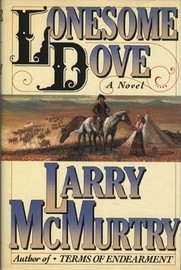 Texas Longhorn
Texas Longhorn
Other herds quickly followed, often using his Texas Trail, which was really just a continuation of the Bozeman Trail.
Cattle had been in the state since the early 1830’s, although only a few head. The numbers grew in the latter-half of the fur trading days, and St. Mary’s Mission in the Bitterroot had a small herd.
Things really began picking up in the late 1850s and early 1860s, however, especially when the gold rush occurred in 1863. Some kept at mining, others went into business. One such man was Nelson Story.
A Start in the Mining Camps
 Nelson Story, c 1900
Nelson Story, c 1900
It took him a few months, but he managed to find $30,000 worth of gold, which he quickly traded in for $20,000 in cash.
Story had had plenty of experience with cattle by that time, having worked as a bullwhacker in Kansas and moving up to operating freight drives from Denver.
He could see what was happening in the mining camps around him, how the men were eating beef each day, even if they weren’t finding gold. Either he had his fill of mucking around in the earth or he knew an opportunity when he saw it.
With his $20,000 he headed down to Fort Worth, Texas, and bought his cattle, which could have been as few as 600 or as many as 3,000, for $10,000, or $10 per head.
The Drive Begins
 Sketch of Old Fort Reno
Sketch of Old Fort Reno
He made it as far as Fort Reno in Wyoming before he and his men ran into Indians. Several of the cattle were scared off and two of Story’s men were wounded in the encounter.
The animals were soon rounded up and the wounded men were left at Fort Reno while Story continued north another 65 miles to Fort Phil Kearney.
Here he ran into Colonel Henry B. Carrington who ordered him to stop, both because of the Indians in the area and because he didn’t want Story’s animals overgrazing on the land around the fort used for the army’s cattle.
Escaping Fort Phil Kearney
 Remington Breech Loader
Remington Breech Loader
At the end of those two weeks Story was fed up and proposed to his men that they defy the colonel’s orders and sneak out at night, putting as much distance between themselves and the fort as possible so as not to draw any pursuers.
It was a bold move, especially considering that there were 3,000 Indians in the area, 300 soldiers in the fort, and Nelson Story’s party only numbered 27 men. Still, Story had equipped his party well, better than the U.S. Army had equipped their own troops, in fact.
U.S. Army soldiers were still using the old Springfield Rifles while Story’s men all had the newer Remington breech-loaders. There was quite a difference in firepower and effectiveness between the two models, as the Indians had discovered first hand near Fort Reno. They didn’t want to experience it again, so had left the cattlemen unmolested over the two week period.
Story was counting on them doing the same as they left the area, and he was right. For the next several nights the men traveled, sleeping by day. They were attacked just two to three times during their daytime rests, but had no trouble defending themselves.
As they got further and further away from the fort the Indian presence became less and less. The rest of the trip was made without further incident and by December, 1866, he and his men had arrived in Livingston, Montana, and set the animals to graze.
He was a shrewd businessman and knew demand when he saw it, which enabled him to charge the miners much more than he had bought the cattle for, often for as much as ten times their worth. His cattle empire was born.
The 1866 Montana Cattle Drive and Lonesome Dove

The novel went on to win the Pulitzer Prize for Fiction in 1985 and the subsequent TV series in 1989 introduced the places and characters to millions.
While much of the novel depicts accurately what life was like for cattle drivers on the trail, all of the characters are fictitious. In fact, the main characters weren't based on Nelson Story at all, or for that matter on any historical individuals.
Still, many believe that Oliver Loving and Charles Goodnight were sources of inspiration, mainly because Goodnight hauled Loving back to Texas after he'd died. Whatever the sources were, if there were any, Lonesome Dove is a great book about coming to Montana, and one that Nelson Story would no doubt have enjoyed.
Brown, Mark H. The Plainsmen of the Yellowstone: A History of the Yellowstone Basin. Bison Books: Lincoln, 1969. p 168-70.
Howard, Joseph Kinsey. Montana: High, Wide, and Handsome. Yale University Press: New Haven, 1943. p 103.
Malone, Michael Peter; Roeder, Richard B.; Lang, William L. Montana: A History of Two Centuries. The University of Washington Press, 1976. p 146-7.
Toole, K. Ross. Montana: An Uncommon Land. University of Oklahoma Press: Norman, 1959. p 140-1.
The Lonesome Dove Tetralogy
|
|
|
|
|


